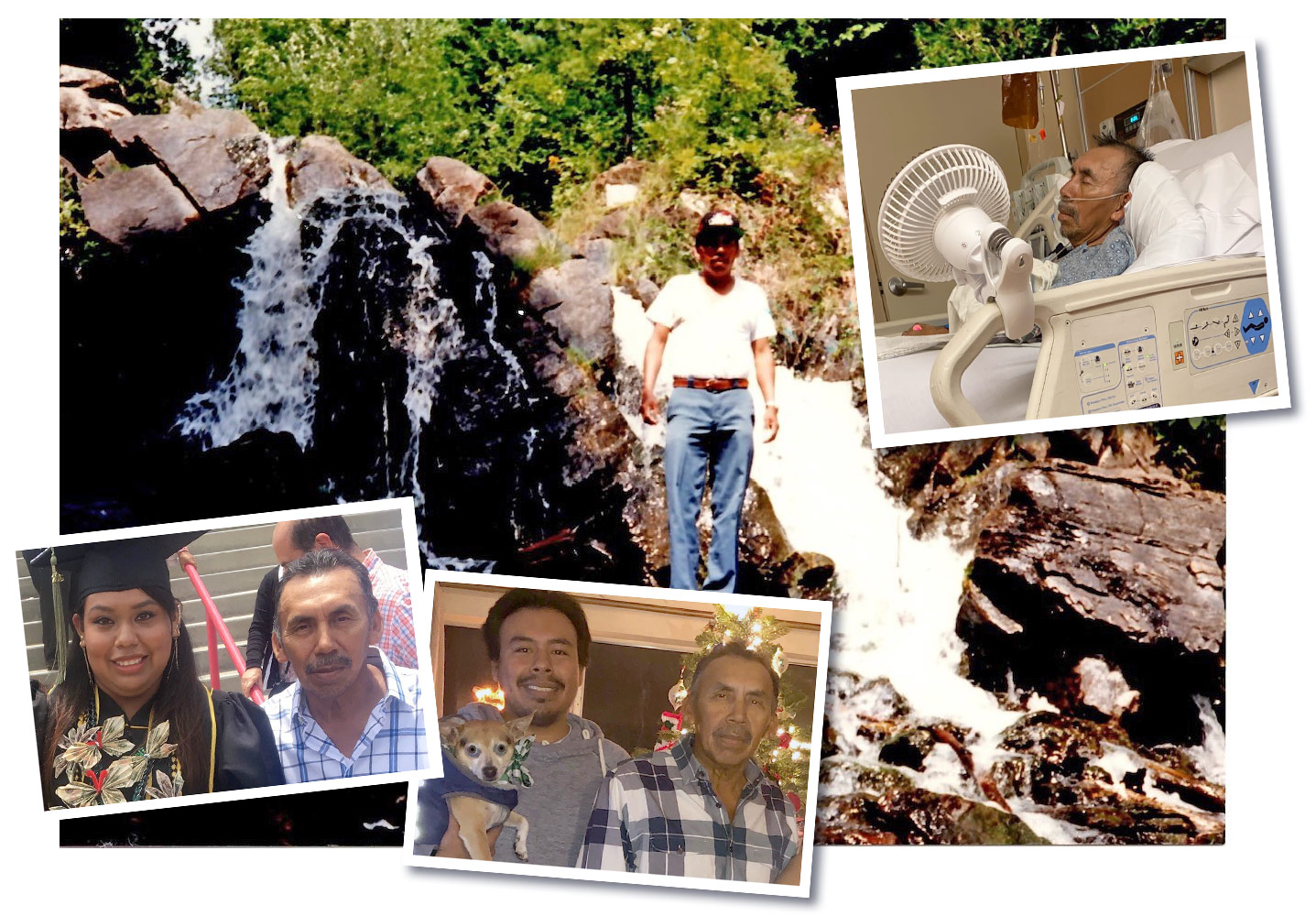Martin Lorenzo was used to doing all the heavy lifting. As a retired construction technician, he and his team would lay the foundation to protect the ground from eroding and prevent any problems when constructing a building. At home, he would help clean, cook and take the family’s dog on walks. In his spare time, he would pop his car’s hood open and work on the engine. His active lifestyle suddenly came to a stop when the unexpected happened.
In early 2020, Martin began experiencing chest pains, shortness of breath and symptoms like the common cold. Martin visited his local clinic and was prescribed some medications. Despite taking his medication, the symptoms persisted. He went back to his doctor who performed more tests. Something was wrong. The doctor sent Martin directly to the Emergency Department.
Martin went to the Emergency Department at MemorialCare Long Beach Medical Center. After checking in, more testing confirmed that Martin was experiencing congestive heart failure due to clogged arteries. Doctors immediately performed a procedure to unclog the arteries.
Following the procedure, Martin still did not feel like himself which is common for heart failure patients. Patients often feel fatigue, dizziness and weakness as a result of heart failure.
“I felt exhausted most of the time,” says Martin. “I still had shortness of breath and needed help with every little thing — from making breakfast to getting around the house.”
Martin returned to the Emergency Department and learned that he was having fluid retention. He was prescribed multiple medications that helped but did not relieve his symptoms.
His cardiologist, Andrew Yoon, M.D., medical director, heart failure, MemorialCare Heart & Vascular Institute, Long Beach Medical Center learned about his challenges at one of his follow-up appointments and told him about a study being led by David Shavelle, M.D., medical director, adult cardiology & interventional lab, MemorialCare Heart & Vascular Institute, Long Beach Medical Center. The study is called “RELIEVE-HF: Reducing Lung Congestion Symptoms Using the V-Wave Shunt in Advanced Heart Failure.” Dr. Shavelle, the lead investigator of the study, thought Martin would be the perfect candidate.
“In patients with heart failure, the pressure on the left side of the heart increases, causing patients to experience shortness of breath and retain fluid,” says Dr. Shavelle. “This treatment involves placing a small device, called a shunt, inside the heart to connect the left atrium to the right atrium. The device reduces the pressure on the left side of the heart and helps the blood travel from the left to the right side.”
Martin was a candidate for the study because he had already received all available treatment options and interventions. Martin completed additional testing and his case was presented to a committee associated with the study that approved the procedure, which was then scheduled for Feb. 22, 2021.
Weeks after the procedure, Martin is quickly getting back into his normal routine. His son, Kenny, can see his dad’s improvements as well.
“It’s great to see my dad do all the things he couldn’t do before,” says Kenny. “Just the other day, he walked to the grocery store with my mom and helped with the shopping. He didn’t have to stop every few minutes to catch his breath, which is such a big change from what I’m used to seeing.”
Elysse Ballon, clinical research lead for RELIEVE-HF, Long Beach Medical Center, and Evelyn Ceja, clinical research co-lead for RELIEVE-HF, Long Beach Medical Center, also see his improvements and are glad to be an extra force of support in Martin’s journey.
“The hope is to see Martin, and patients like him, that suffer from heart failure, experience dramatic improvements,” says Elysse. “Instead of a slow recovery, it’s a quick option to get them back on their feet in no time. It’s incredible to see him improve and do well.”
Although Martin can’t walk the dog long distances just yet, he still plays catch, making the two of them very happy.
“I’m glad that I agreed to participate in this study,” says Martin. “Throughout the whole process, everyone involved was so attentive. And because of them, I can go back to my normal way of life, which I am so grateful for.”
